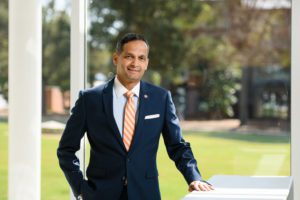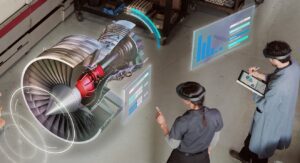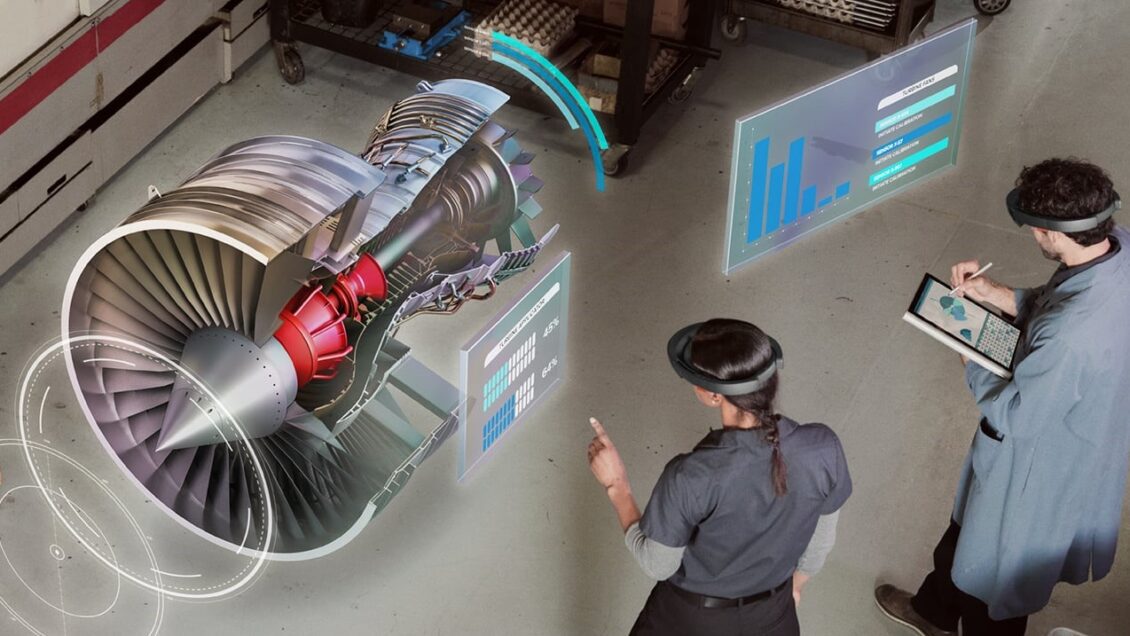An aircraft maintenance technician puts on a headset that allows her to see the physical plane, along with a digital overlay that highlights potential repairs, all while an AI assistant makes suggestions based on a treasure trove of data.
This is the future envisioned by a nationwide team that is flying high after receiving a $2-million research grant from a National Science Foundation program called Future of Work at the Human-Technology Frontier: Core Research. The team plans to develop artificial intelligence that would combine with “extended reality” technologies to help technicians ensure planes are safe to fly.

Clemson University is leading this effort with faculty members from the School of Computing and the John W. Walker Department of Economics. Partnering institutions include Purdue University, Southern Illinois University, Greenville Technical College, SA Technologies, NSF National Center for Autonomous Technologies, Aviation Technician Education Council, ChooseAerospace, Frontier Airlines, AAR, Republic Airways, Atlas Air, Stevens Aerospace, Vericor, AMFA and Lockheed Martin.
Among the key collaborators from Clemson University are Kapil Chalil Madathil, the Wilfred P. Tiencken Professor of Industrial Engineering; Nathan McNeese, the McQueen Quattlebaum Endowed Associate Professor of Human-Centered Computing; Carlos Toxtli Hernandez, an assistant professor in the School of Computing; and Devon Gorry, Yichen Zhou, and Jon Leganza, who are all faculty members in the economics department.
“This transformative grant reflects Clemson’s dedication to innovation and workforce development, particularly in areas crucial to South Carolina’s economy,” said Executive Vice President for Academic Affairs and Provost Robert H. Jones. “By integrating artificial intelligence and extended reality, we are not only pioneering safer aviation practices but also preparing technicians for the industry’s future.”
The principal investigator on the new research and on grant that created the Clemson University Center for Workforce Development is Anand Gramopadhye.
“It is imperative that we equip our workforce with the tools and skills they need to remain competitive in our ever-evolving landscape,” said Gramopadhye, who is also dean of Clemson’s College of Engineering, Computing and Applied Sciences. “Our multidisciplinary partnerships with public and private institutions strengthens our impact, helping ensure we drive aviation safety and professional growth.”
Researchers envision a future in which technicians work collaboratively with artificial intelligence to inspect airplanes to reduce human error, which accounts for 70% of aircraft accidents.

In early prototypes, students studying to be technicians wore extended-reality headsets while inspecting planes. Extended reality is an umbrella term that covers virtual, augmented and mixed reality technologies that often blend the digital and real worlds.
Combining AI and extended reality can provide technicians with a new tool for inspection and provide a second line of defense against aviation accidents. AI helps by quickly spotting issues a human might miss, while extended reality provides technicians with visual aids directly overlaid on the real-world parts they are inspecting.
The combination could mean less guesswork and more precise repairs to make planes safer.
The project is addressing a large and growing need. More than 151,000 aircraft maintenance technicians are employed in the United States, researchers said. With reliance on air travel growing, more 626,000 new technicians will be needed by 2041, they said.
In the four-year grant period, the team plans to start with better understanding inspection tasks and create and train AI models before designing the interface that technicians would use. Before it’s over, the plan calls for the team to train technicians in human-AI collaborations and finish with an evaluation of the market impact of the technology.
Researchers with a wide variety of backgrounds are combining forces to strengthen the team’s abilities, making the project a showcase for convergence research. Those involved include engineers, economists, social scientists, and aviation, artificial intelligence and extended reality researchers.
Leading the effort from Purdue University are Damon Larcel, Manoj Patanka and Gourav Nanda. Southern Illinois University’s Karen Johnson, and Greenville Technical College’s Carl Washburn are contributing their aviation maintenance expertise to this collaborative endeavor.
“Collaborating with this talented, interdisciplinary team on this national center will be an exciting journey into aircraft safety,” the team from Purdue said in a joint statement. “The fusion of AI and extended reality promises a paradigm shift in how we approach aircraft safety and maintenance, and to be at the forefront of innovation in this area is invigorating.”
The team from Aviation Technician Education Council also issued a joint statement:
“We stand at the cusp of a new era in aviation safety and maintenance. The synthesis of human expertise with the cutting-edge capabilities of AI and extended reality holds the promise of a future where skies are safer and the talent steering them is more equipped than ever. Our commitment remains steadfast: to harness technology not to replace, but to empower and uplift the human spirit in ensuring aviation’s safest tomorrows.”
Get in touch and we will connect you with the author or another expert.
Or email us at news@clemson.edu

